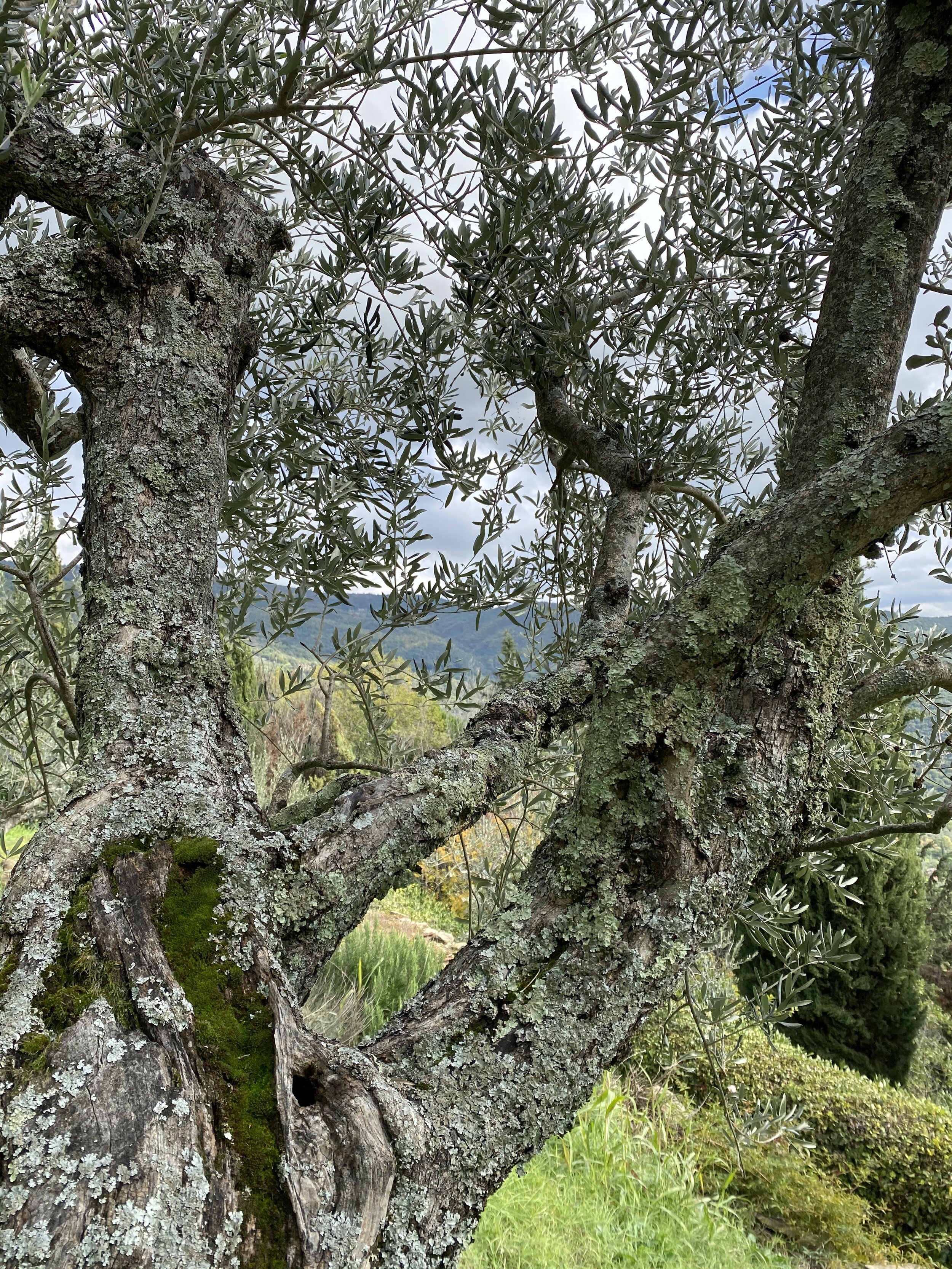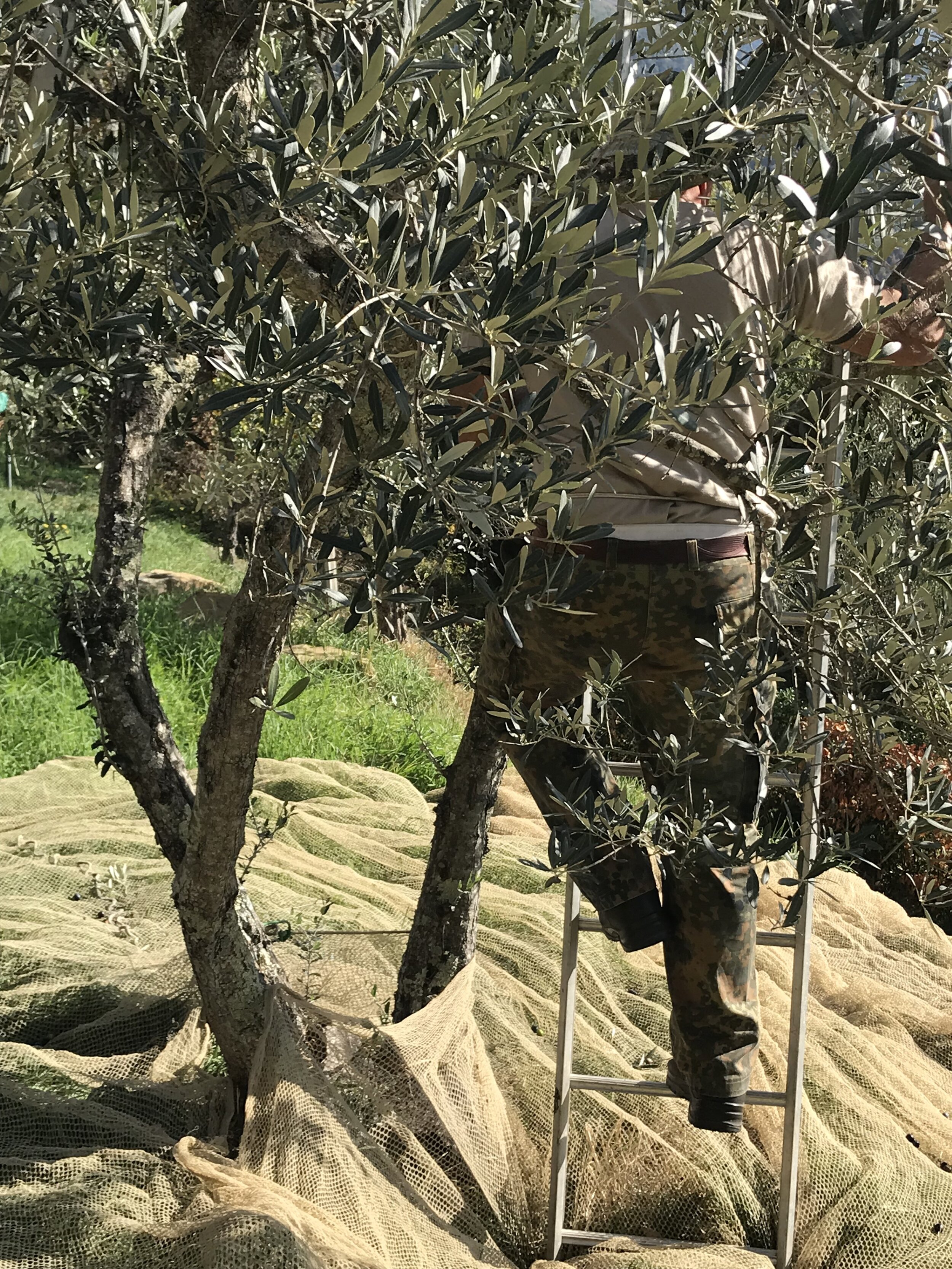Ice Storms and Olive Trees

Old trunk, still scarred from the freeze.

Thirty-five year-old “shoots.”
The pruning-season la potatura, when with saws and sharpened clippers many of the olive trees receive a measured trimming—the Italian word, potare, to cut off the dead and the damaged, the suckers (polloni), and the overgrown and out-of-reach-for-picking branches. It’s an art, of course: as Giorgio’s father Francesco first told us, “Open up the tree so that a particular Tuscan bird can fly through it without its wings touching the branches.” Maybe the blackbird (our neighbor Placido has a rescued merlo in a cage) or the magpie (you’ve most likely heard Giaocchino Rossini’s rousing overture for La Gazza Ladra, The Thieving Magpie). In the meantime, we’ve been doing, as all of you probably have too, our own pruning, removing worn-out ideas and bad feelings, things we’ve kept on the shelves of the tool shed for years without touching, all those shirts in the back of the closet that haven’t seen daylight in years—time to lighten up, free ourselves, get ready for the next harvest!

